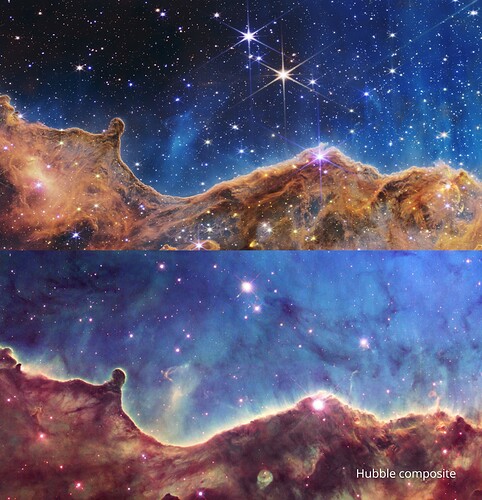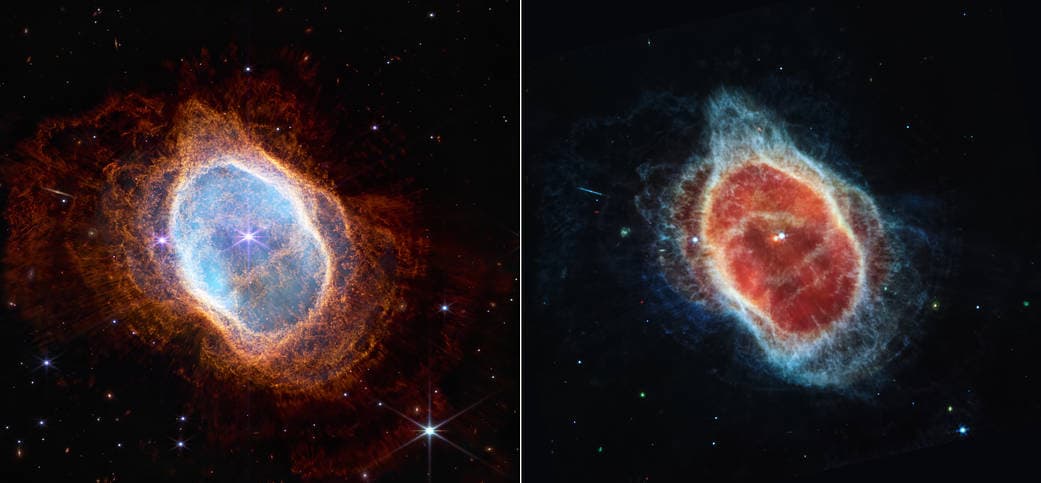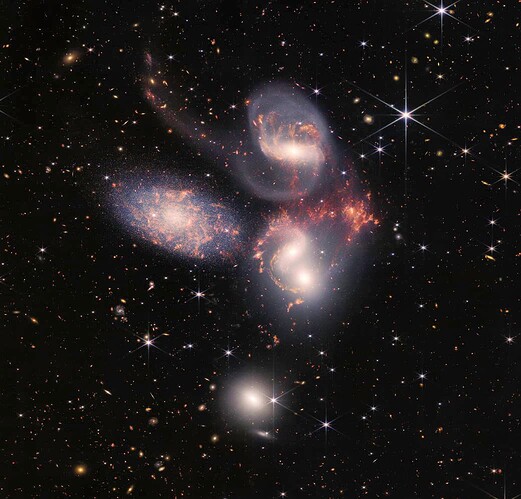Meh
Zum ersten Mal seit 50 Jahren befasst sich derzeit der US-Kongress ja mal wieder mit dem Thema UFOs.
Naja sind schon paar interessante Sachen dabei.
Ich dachte immer der Tenor war, seit es massenhaft hochauflösende Kameras gibt, wären solche Sichtungen zurück gegangen, aber das ist wohl nicht so.
Zu lange habe ein Stigma, das mit Ufos verbunden sei, eine nachrichtendienstliche Analyse verhindert. Piloten hätten es vermieden, derlei Beobachtungen zu melden, beklagt der demokratische Abgeordnete, „oder sie wurden ausgelacht, wenn sie es taten. Beamte des Verteidigungsministeriums verdrängten das Thema ins Hinterzimmer oder kehrten es ganz unter den Teppich“ – aus Angst vor einer skeptischen Geheimdienst-Community.
Dabei mangelt es an Berichten und Beobachtungen mitnichten, verstärkt in den letzten 20 Jahren, wo technisches Material und Drohnen stets bessere Bilder liefern können. So filmten Piloten leuchtende Bälle ohne Flügel oder Triebwerke. Offiziere einer Fregatte beobachteten drei blinkende Pyramiden am Himmel. US-Generäle bestätigten: alles echt. „Wir wissen nicht, was diese Objekte sind“, sagte Nasa-Chef Bill Nelson im vorigen Jahr.
da hab ich bock drauf !
Leider ist das Wetter dort oben wohl etwas schlechter als erwartet. Hoffentlich war das jetzt die Ausnahme.

Heute gelernt, dass es der NASA letztes Jahr im April gelungen ist auf dem Mars Sauerstoff zu erzeugen. Ziel ist es etwaige Raumfahrer zum Mars vor Ort mit Sauerstoff versorgen zu können ohne das dieser extra von der Erde mitgeführt werden muss. Superinteressant.
Zum Glück haben sie es noch geschafft die Kommunikation mit Capstone, dem Mondsatelliten, zu etablieren. Es sah zwischendurch ja nicht so gut aus. Der ist wichtig für alle weiteren Mondmissionen.
Und auch bei Starship gehts wohl endlich weiter.
Nächste Woche gibts die ersten richtigen Bilder vom Webb-Teleskop und man kann sich auf der Erde wieder richtig, richtig klein fühlen. Finde faszinierend und beängstigend gleichzeitig.
Warum beängstigend? Vielleicht kannst du mir das erklären, meine Schwester würde das nämlich auch so beschreiben. Faszinierend und beängstigend. Und ich kann das nie so recht nachvollziehen.
Die fragt mich das auch jedes mal, wenn wir im Sommer im klaren Sternenhimmel Sternschuppen schauen und ich von dem bisschen, was ich astronomisch werß erzähle, ob ich das alles nicht beunruhigend und beängstigend finde, ihr würde es so gehen.
Ich antworte immer, dass ich die Frage nicht so ganz verstehe und dass es andere Dinge gibt, die mir Angst machen, aber sicherlich nicht die Größe und Leere des Alls, die Bedeutung(slosigkeit) von auf unserem kleinen Felsbrocken und irgendwelche unbeantwortete Fragen
Ich glaube du hast es eigentlich verstanden.
Also … Angst ist vllt. das nicht ganz passend. Es ist ca. so wie im offenem Meer schwimmen. Das Unbekannte, die Weite. Weniger die „Angst“ vor bösen Aliens. Mehr der Gedanke, dass man weiß es nicht verstehen zu können. Wenn man versucht diese Unendlichkeit zu begreifen kann jeder an sich selbst feststellen, wo der menschliche Verstand aufhört zu arbeiten.
Das erste Bild vom James Webb Space Telescope. Morgen sollen noch mehr kommen
Hier kann mans nochmal etwas hochaufgelöster sehen:
Dröge PR-Veranstaltung war das. Harris ist fast so eine gute Rednerin wie Scholz. Seltsamer Stream. Heute hoffentlich mehr Inhalt.
Schöne kleine Info Sammlung von u/Andromeda321
https://www.reddit.com/r/spaceporn/comments/vwuxmt/first_james_webb_image/ifs77ol/?utm_source=share&utm_medium=web2x&context=3
Astronomer here! This is SUCH a strange but wonderful day (at the start of a strange and wonderful week)- I have literally been hearing about JWST for the majority of my life, since I was a teenager first getting interested in astronomy, and to see that we are now truly in the JWST era is mind-boggling! Not gonna lie, I think a cynical part of me thought something would go wrong and we wouldn’t get here… and not only seeing the images, but having such immense pride for the humans who made this possible, is just so emotional.
To answer a few quick questions I’ve seen around:
What is the image of?
A galaxy field called SMACS 0723, located 4.6 billion light years away. What’s more, because of the orientation of the foreground galaxies we get to see some really zany gravitational lensing of light from galaxies much further away in this field- about 13 billion years, to be precise! So these are all very young galaxies, all formed just a few hundred thousand years after the Big Bang. Incredible! And wow, never seen galaxies like those lensed ones before- very Salvador Dali, if I may say so.
The ones that appear to have white light are the ones creating the lensing 5-ish billion light years away, and the reddish ones are the lensed ones. (At least, I’m pretty sure that’s how it works as a general rule of thumb.) Here is Hubble’s view of the same field by comparison, courtesy of /u/NX1.
Also note, JWST is an infrared telescope (ie, light more red than red) because its first science priority was to detect the earliest galaxies (it’s been under development so long exoplanets frankly weren’t the huge thing they are now), and by the time the light from the earliest galaxies reaches us, it has been „redshifted“ to these wavelengths. So before you couldn’t see these lensed galaxies with Hubble, and to see them let alone in such detail is astounding !
Pretty! Is there scientific value to it?
Yes! The thing to realize is even with these very first images, because JWST is able to see in detail no telescope has had before there’s a ton of low hanging fruit. In the case of this image, one of the big outstanding questions is a feature called the UV luminosity function, which tells you the star formation rate in those early galaxies. If you literally just count up the number of galaxies you see in those first JWST images, you’ll already know more about the star formation rate in the early universe than we do now! Further, when you study the gravitational lensing pattern, you can learn about those foreground galaxies- things like their mass, and how the dark matter is distributed around them. OMG this is gonna be so neat!
I need more JWST images in my life! What’s next?
There is a press conference tomorrow at 10:30am! At the press conference there will be several more images revealed, from the Carina Nebula to Stephan’s Quintet (links go to the Hubble images to get you psyched). There will also be some data revealed, such as the first exoplanet spectrum taken by JWST- note, exoplanet spectra have been done before scientifically, but the signal to noise of JWST allows this to be done to greater accuracy than before. (No, this is not going to have a signature from life- it’s a gas giant exoplanet, and it’s safe to say if it had a signature from life Biden would have revealed that today.)
Pretty pictures aside, can I access the actual science data? And when will we see the first JWST pictures?
The JWST archive will be launched with all the commissioning data for these images on Wednesday, July 13 at 11am EDT , with the first Early Release Science programs’ data going up on Thursday . Specifically for the latter, there are „early release science“ programs which are going to be prioritized over the first three months (list here) where those data are going to be immediately available to the public, so everyone can get a jump start on some of the science. (Also, the next cycle of JWST proposals is in January, so this is going to be really crucial for people applying for that.) My understanding from my colleague is there are many people in the sub-field of early galaxies who literally have a paper draft ready to go and intend to get the preprints out ASAP (like, within hours), just because there will be so much low hanging fruit for that field in those very first images! Like, I’ll be shocked if they’re not out by the end of the week, and the place to see those first science papers are on the ArXiv (updates at 0:00 UTC).
You can learn more about the JWST archive here.
How did they decide what to observe anyway?
As is the case for all NASA telescopes, anyone in the world can apply for JWST time! You just need to write a proposal justifying why your idea is better than anyone else’s, and well enough that a panel of astronomers agrees. In practice, it’s really competitive, and about 4.5x more hours were requested than there are literal hours for JWST to observe (actually way better than Hubble which has been closer to 10x- Hubble can only observe on the night half of the Earth’s orbit, but JWST has a sun shade so you get almost nonstop observing). The resulting proposals that won out are all a part of „Cycle 1“ which begins this week, and you can read all about them here. (Cycle 1 includes the Early Release Science projects I discussed above.)
As an aside, while I am not personally involved in it (I’m more on the radio astronomy side of things) I’m super excited because my group has JWST time! We are going to observe what is likely to be the first neutron star merger observed by JWST- I very much hope to be able to look over the shoulder of the guy in charge of the project type thing.Because we have no idea on when that is going to happen, we basically have the right to request JWST observations if we see a signal called a short gamma-ray burst that tells us one of these events has occurred, and they’ll change the schedule to squeeze us in as soon as they can (probably a week or two, with faster turn around in future years). Whenever it happens, I’m sure I’ll tell you guys all about it!
Anyway, a toast to JWST- and if anyone who works on it is reading this, we are all so proud of you! I can’t wait to see where this new adventure takes us!
Bei meinem Link sind Dowloads für fullres dabei 
Ein weiteres Foto mit Vergleich zu Hubble vorher. 
Edit:
Hier zwei verschiedene Spektren.
Und noch eins.




